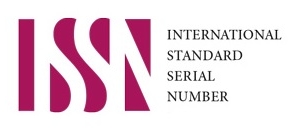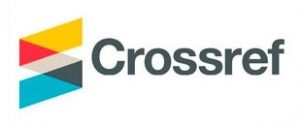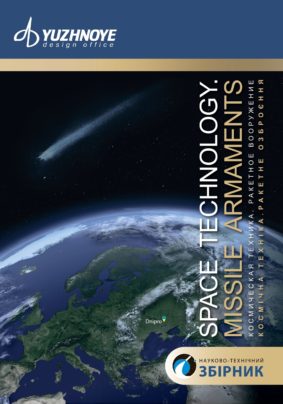Keywords cloud
11. Parameters calculation of the lunar regolith transport system
National Academy of Sciences of Ukraine, M.S. Poliakov Institute of geotechnical mechanics1; Ukrainian State University of Science and Technologies2; Yangel Yuzhnoye State Design Office, Dnipro, Ukraine3
Page: Kosm. teh. Raket. vooruž. 2024, (1); 93-101
DOI: https://doi.org/10.33136/stma2024.01.093
Language: Ukrainian
Key words: Moon, regolith, auger, electric motor, capacity, power
1. Pustovgarov A. A., Osinoviy G. G. Kontseptsiya shlyuzovogo modulya misyachnoi bazy. ХХV Mizhnarodna molodizhna naukovo-praktychna conf. «Lyudyna i cosmos». Zbirnyk tez, NTsAOM, Dnipro, 2023. S. 86 – 87.
2. Semenenko P. V. Sposoby transortirovki poleznykh iskopaemykh ot mesta ikh dobychi k mestu pererabotki v lunnykh usloviyukh. P. V. Semenenko, D. G. Groshelev, G. G. Osinoviy, Ye. V. Semenenko, N. V. Osadchaya. XVII conf. molodykh vchenykh «Geotechnichni problemy rozrobky rodovysch». m. Dnipro, 24 zhovtnya 2019 r. S. 7.
3. Berdnik A. I. Mnogorazoviy lunniy lander. A. I. Berdnyk, M. D. Kalyapin, Yu. A. Lysenko, T. K. Bugaenko. Raketno-kosmichny complexy. 2019. T. 25. №5:3-10. ISSN 1561-8889. https://doi.org/10.15407/knit2019.05.003
4. Semenenko Ye. V., Osadchaya N. V. Traditsionnye i netraditsionnye vydy energii, a takzhe kosmicheskie poleznye iskopaemye v okolozemnom prostranstve. Nauch.-parakt. conf. «Sovremennye raschetno-experimentalnye metody opredeleniya characteristic raketno-kosmicheskoy techniki». m. Dnipro, 10 – 12 grudnya 2019 r. S. 62 – 63.
5. Komatsu pobudue excavator dlya roboty na Misyatsi https://www.autocentre.ua/ua/ news/concept/komatsu-postroit-ekskavator-dlya-raboty-na-lune-1380272.html.
6. Help NASA Design a Robot to Dig on the Moon https://www.nasa.gov/directorates/ stmd/help-nasa-design-a-robot-to-dig-on-the-moon/
7. Robert E. Grimm. Geophysical constaints on the lunar Procellarum KREEP Terrane. Vol. 118, Issue 4. April 2013. P. 768-778. https://agupubs-onlinelibrary-wiley-com.translate. goog/doi/10.1029/2012JE004114?_x_tr_sl=en&_x_tr_tl=ru&_x_tr_hl=ru&_x_tr_pto=sc
https://doi.org/10.1029/2012JE004114
8. Chen Li. A novel strategy to extract lunar mare KREEP-rich metal resources using a silicon collector. Kuixian Wei, Yang Li, Wenhui Ma, Yun Lei, Han Yu, Jianzhong Liu. Journal of Rare Earths Vol. 41, Issue 9, September 2023, P. 1429-1436. https://www-sciencedirect-com.translate.goog/science/article/ abs/pii/S1002072122001910?_x_tr_sl=en&_x_tr_tl=ru&_x_tr_hl=ru&_x_tr_pto=sc https://doi. org/10.1016/j.jre.2022.07.002
9. Moon Village Association https://moon-villageassociation.org/about/
10. GLOBAL MOON VILLAGE. https://space-architect.org/portfolio-item/ global-moon-village//
11. Just G. H. Parametric review of existing regolith excavation techniques for lunar In Situ Resource Utilization (ISRU) and recommendations for future excavation experiments. G. H. Just, Smith K., Joy K. H., Roy M. J. https://doi.org/10.1016/j.pss.2019.104746
https://www.sciencedirect.com/science/article/pii/S003206331930162X
12. Anthony J. Analysis of Lunar Regolith Thermal Energy Storage. Anthony J. Colozza Sverdrup Technology, Inc. Lewis Research Center Group Brook Park, Ohio NASA Contractor Report 189073. November 1991. S-9 https://denning.atmos.colostate.edu/readings/ lunar.regolith.heat.transfer.pdf
13. Obgruntuvannya vykorystannya shneka dlya utilizatsii vidkhodiv vuglezbagachennya z mozhlyvistyu pidvyschennya bezpeki energetychnoi systemy pidpriemstv. SLobodyannikova I. L., Podolyak K. K., Tepla T. D. Materialy XХІ Mizhnarod. conf. molodykh vchennykh (26 zhovt. 2023 roku, m. Dnipro). Dnipro: IGTM im. M.S. Polyakova NAN Ukrainy, 2023. S. 50–55.
14. Kulikivskiy V. L., Paliychuk V. K., Borovskiy V. M. Doslidzhennya travmuvannya zerna gvintovym konveerom. Konstryuvannya, vyrobnitstvo ta exspluatatsiya silskogospodarskykh mashin. 2016. Vyp. 46. S. 160 – 165. https://doi.org/10.3233/EPL-46204
14. Lyubin M. V., Tokarchuk O. A., Yaropud V. M. Osoblyvosti roboty krutopokhylennykh gvyntovykh transporterov pri peremischenni zernovoi produktsii. Tekhnika, energetika, transport APK. 216. № 3(95). S. 235 – 240.
15. Gevko R. B., Vitroviy A. O., Pik A. I. Pidvyschennya tekhnichnogo rivnya gnuchkykh gvyntovykh konveeriv. Ternopil: Aston, 2012. 204 s.
16. Bulgakov B. M., Adamchyuk V. V., Nadikto V. T., Trokhanyak O. M. Teoretichne obgruntuvannya parametriv gnuchkogo gvintovogo konveera dlya transportuvannya zernovykh materialiv. Visnyk agrarnoi nauki. 2023. № 4(841). S. 59 – 66.
17. New Views of the moon. Reviews in mineralogy and geochemistry. Eds. Joliff B.L., Wieczorek M.A., Shearer C.K., Neal C.R. Mineralogical Society of America. Reviews in mineralogy and geochemistry. 2006. Vol. 60. 721 p. DOI: 10.2138/rmg.2006.60.
18. Semenenko Ye. V. Nauchnye osnovy technologiy hydromechanizatsii otkrytoy razrabotki titan-cyrkonovykh rossypey. Yevgeniy Vladimirovich Semenenko. Kiev: Nauk. dumka, 2011. 232 s.
Full text (PDF) || Content 2024 (1)
| Country | City | Downloads |
|---|---|---|
| USA | Chicago; Columbus; Ashburn; Columbus; Ashburn; Phoenix; Phoenix; Phoenix; Phoenix; Phoenix; Phoenix; Phoenix; Phoenix; Phoenix; Phoenix; Phoenix; Phoenix; Phoenix; Phoenix; Phoenix; Los Angeles; San Francisco; El Monte; El Monte; Ashburn; Ashburn; Houston; Ashburn; Mountain View;; Portland; Portland; San Mateo; San Mateo; Ashburn; Ashburn; Ashburn; Ashburn; Pompano Beach | 39 |
| Singapore | Singapore; Singapore; Singapore; Singapore; Singapore; Singapore | 6 |
| China | Pekin;; Shenzhen; Yiwu; Pekin | 5 |
| Germany | Falkenstein; Düsseldorf; Falkenstein; Leipzig; Leipzig | 5 |
| Canada | Toronto; Toronto; Toronto; Toronto | 4 |
| Unknown | ; Hong Kong; Hong Kong | 3 |
| France | ; Paris | 2 |
| The Republic of Korea | Seoul | 1 |
| Israel | Haifa | 1 |
| Netherlands | Amsterdam | 1 |
| Ukraine | Kremenchuk | 1 |
3. Future projects of lunar exploration implemented by Yuzhnoye SDO
Page: Kosm. teh. Raket. vooruž. 2024, (1); 19-28
DOI: https://doi.org/10.33136/stma2024.01.019
Language: English
Key words: rocket propulsion, hydrogen energy accumulator, inert anodes.
Full text (PDF) || Content 2024 (1)
| Country | City | Downloads |
|---|---|---|
| USA | Mountain View; Mountain View; North Bergen; Washington; Buffalo; Buffalo; Los Angeles; Ashburn; Columbus; Columbus; Buffalo; Ashburn; Phoenix; Phoenix; Phoenix; Phoenix; Phoenix; Phoenix; Phoenix; Phoenix; Phoenix; Phoenix; Phoenix; Phoenix; Phoenix; Phoenix; Phoenix; Ashburn; El Monte; Ashburn; Ashburn; Ashburn; Quinton; Ashburn; Mountain View; Ashburn; Portland; San Mateo; San Mateo; Ashburn; Ashburn; Ashburn; Pompano Beach; Philadelphia | 44 |
| China | Pekin; Putian; Shantou; Jinan;; Hangzhou; Shenzhen; Pekin | 8 |
| Germany | Falkenstein; Falkenstein; Düsseldorf; Falkenstein; Leipzig | 5 |
| Singapore | Singapore; Singapore; Singapore; Singapore | 4 |
| Canada | Toronto; Toronto; Toronto; Toronto | 4 |
| France | ; Paris | 2 |
| Ukraine | Kremenchuk; Kremenchuk | 2 |
| The Republic of Korea | Seoul | 1 |
| Unknown | 1 | |
| Netherlands | Amsterdam | 1 |
| Belgium | 1 |
Collected scientific and technical articles «Космічна техніка. Ракетне озброєння» / «Space technology. Missile armaments» is the specialized professional edition, where new results of the theoretical and experimental research in the rocket and space area are published.
Subject matter of the collected articles covers the issues of creation and operation of the up-to-date missile and space launch systems, spacecraft and satellite systems, as well as their component parts, in particular:
– design and development of the launch-vehicles/integrated launch vehicles, missiles, ground complexes;
– design and development of the components parts for the launch vehicles/integrated launch vehicles, missiles (solid- and liquid-propellants engines, power supply systems, control systems, separation systems, arming etc.);
– design and development of the component parts for the ground complexes (buildings, filling systems, pre-launch processing systems etc.);
– design and development of the spacecraft and their component parts;
– spaceflight and studies of the Moon and other planets;
– materials and up-to-date technologies in the rocket and space technology;
– issues of aerodynamics, heat-mass exchange, flight theory, loading and strength of the structures;
– issues of efficiency, reliability, safety and feasibility of the rocket and space systems;
– other aspects that directly relate to the creation and operation of the rocket and space systems.
According to Orders of the Ministry of Science and Education of Ukraine No. 1643 of 28.12.2019, No.409 of 17.03.2020, and No. 1188 of 24.09.2020 concerning the list of the professional scientific publications where the results of theses for the degrees of doctor of sciences, candidate of sciences, and doctor of philosophy, the journal Space Technology. Rocket Weapons was included in Category B.
The codes of specialties for thesis defense:
134 Aircraft and space rocket technologies;
142 Engineering of power generation plants;
151 Automatization and integrated computer technologies.
The collected articles edition publishes the results of scientific research of the scientists, scholars and research and educational personnel of the scientific institutions and institutions of higher educations to get nominated for the degrees of Candidate of Engineering (Doctor of Philosophy), Doctor of Engineering Sciences and Doctor of Physical and Mathematical Sciences. The collected articles cover the following fields: 134 – Aviation and rocket & space technology; 142 – Power engineering; 151 – Automation and computer-integrated technologies.
Until 1993 the collected scientific and technical articles «Космічна техніка. Ракетне озброєння» / «Space technology. Missile armaments» was published under the title of «Calculations, design, development and testing of the ballistic missiles».
Publisher: State Enterprise «Yuzhnoye» State Design Office».
Languages of publication: Ukrainian, English.
Frequency of edition: twice a year.
State registration of the printed media in the Ukraine’s National board for the broadcasting activities: media identifier – R30-01817 of 04.12.2023.



